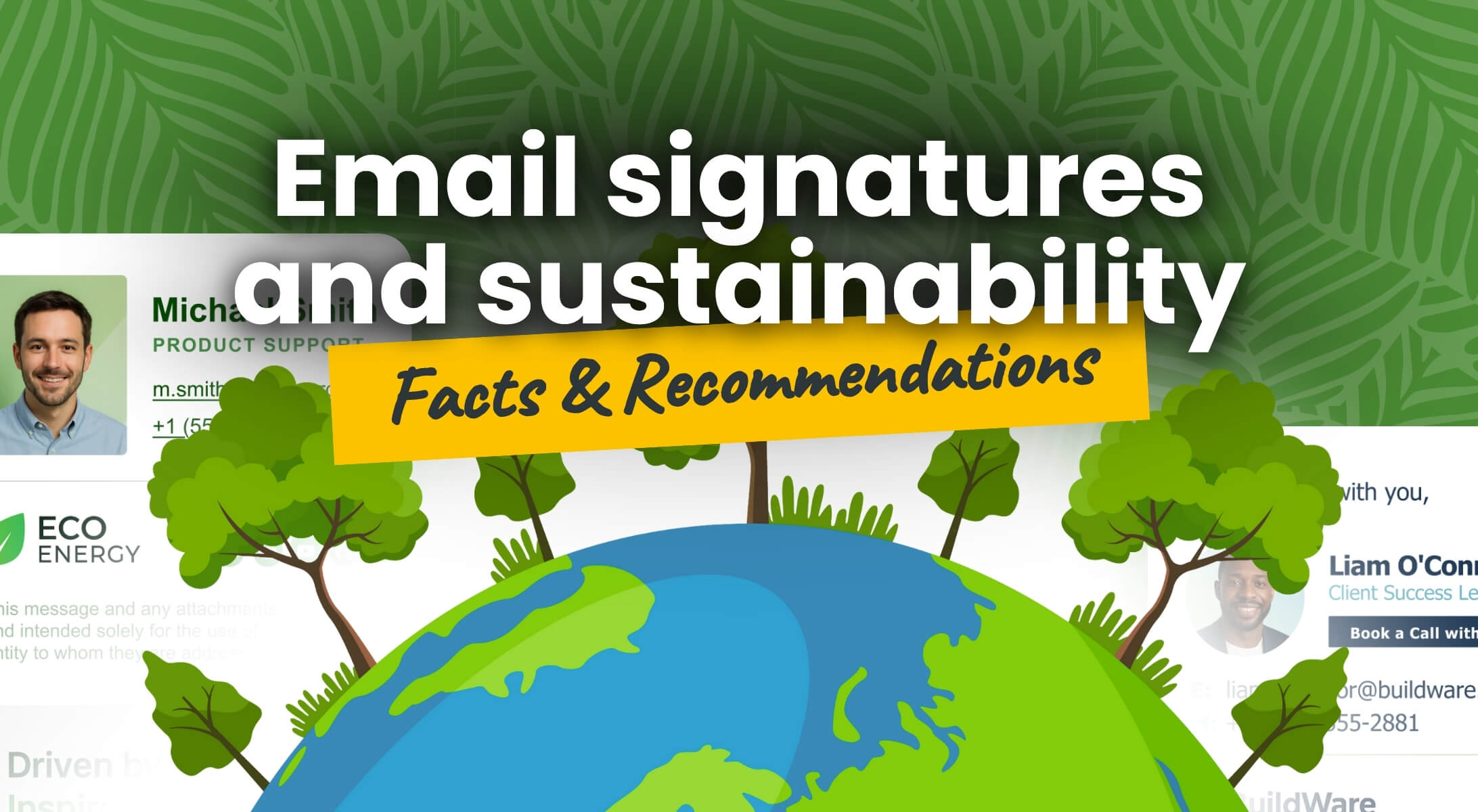An article from The Conversation, based on a study by Joshua M. Pearce (professor at Western University, holding the John M. Thompson Chair in Information Technology and Innovation), recently made waves by suggesting that email signatures are quietly harming the planet and even contributing to human deaths. Yes, you read that right. According to the study, every extra word in your email – Pearce mentions specifically pronouns and land acknowledgment proclamations – contributes to data load, energy consumption, emissions… and, in a twisted extrapolation, climate-related mortality.
Upon examining the study, SignatureSatori found significant issues with its logic, numbers, and conclusions. What started as a matter of curiosity quickly led to a deeper analysis highlighting these flaws. Let’s unpack the study and, more importantly, shift the conversation toward what actually matters regarding sustainable email communication.
📝 If you’re interested in our full response to Pearce’s article, written by Jan Moravec from SignatureSatori, you can read it here (PDF). This blog highlights the main takeaways from that response and shares tips for more sustainable email signatures.
The Problem With Pearce’s Premise
Pearce’s article claims that adding pronouns or land acknowledgments to your signature increases the energy required to send and store emails, thereby raising your carbon footprint. It attempts to quantify this impact globally and links it, quite dramatically, to premature deaths.
Right From the Start, the Logic Is Shaky:
- Pearce bases his calculations on a flawed assumption, assigning email volume by population share rather than actual usage.
- Word counts are based on a marketing blog post about newsletters, not real-life emails.
- The ‘4g of CO2 per email’ stat is taken from a 2010 edition of ‘How Bad Are Bananas?‘, while the 2020 revision reports far lower numbers for most emails.
This makes the results highly speculative and far from a rigorous academic approach. We’re not saying digital communication is carbon neutral, but these estimates are hardly a solid foundation.
The Carbon Footprint of an Email Signature
Pearce uses the example that even adding just three words like ‘he/his’ to an email signature can meaningfully increase its carbon footprint. He claims it increases the email size by 0.7%.
We ran our own experiment. A standard HTML email we received had 15,794 characters. Adding pronouns increased the total by just 16 characters – barely 0.1%, which is seven times less than Pearce claims. And even that full signature remains relatively small in the broader context of email data. Some clients, like Gmail, cache externally hosted elements such as images to reduce repeated loading.
So, can email signatures add to your carbon emissions? Yes, but let’s be realistic. Most of the energy is spent on far more demanding steps: writing and reading the email, powering your device, transferring data through networks, and running data centers. Compared to that, a few extra bytes in a signature are almost negligible.
Email signatures won’t make or break the climate, but if you’re operating at scale, sending thousands of emails, and still want to reduce even the smallest inefficiencies, keep reading to see how to approach it thoughtfully.
What Makes a Sustainability Email Signature (and How to Design an Eco-Friendly One)
If you’re serious about sustainability in email communication, don’t start by deleting meaningful low-impact words (like pronouns, which serve a valuable role in inclusive communication). Instead, take a step back and ask: Is your email signature as efficient and lightweight as it could be?

A Truly Sustainable Email Signature Is One That:
- minimizes large embedded images or heavy banners
- uses a simple text-based layout or optimized table-based HTML
- avoids outdated or unnecessary text (do you really still use that fax number?)
- and stays at a reasonable size
Keeping your email signature eco-friendly doesn’t mean removing it altogether — it means being intentional about what’s in it, so it stays useful, on-brand, and as efficient as possible.
Conclusion
Email signatures play a small role in producing a carbon footprint, but optimizing them is still worth the effort if you’re sending a lot of emails. Focus on compressing images, removing outdated or unnecessary information, and keeping things tidy.
But don’t lose sight of the bigger picture: real digital sustainability isn’t about deleting a few words – it’s about smarter digital behavior overall. Educating yourself on digital sustainability can, in general, make a far greater impact than any email footer ever could.
FAQ
Do email signatures really increase carbon emissions?
Yes, but only minimally. Adding a few words like pronouns increases email size by around 0.1%, which is negligible compared to most other digital activities.
How can I make my email signature more eco friendly?
Use optimized images (or none at all), avoid outdated or unnecessary text, and keep formatting simple.
Is it worth optimizing email signatures for sustainability?
It depends. For individuals, the impact is minimal. But in large organizations where many people send high volumes of emails, it’s a smart, low-effort way to reduce digital waste.

